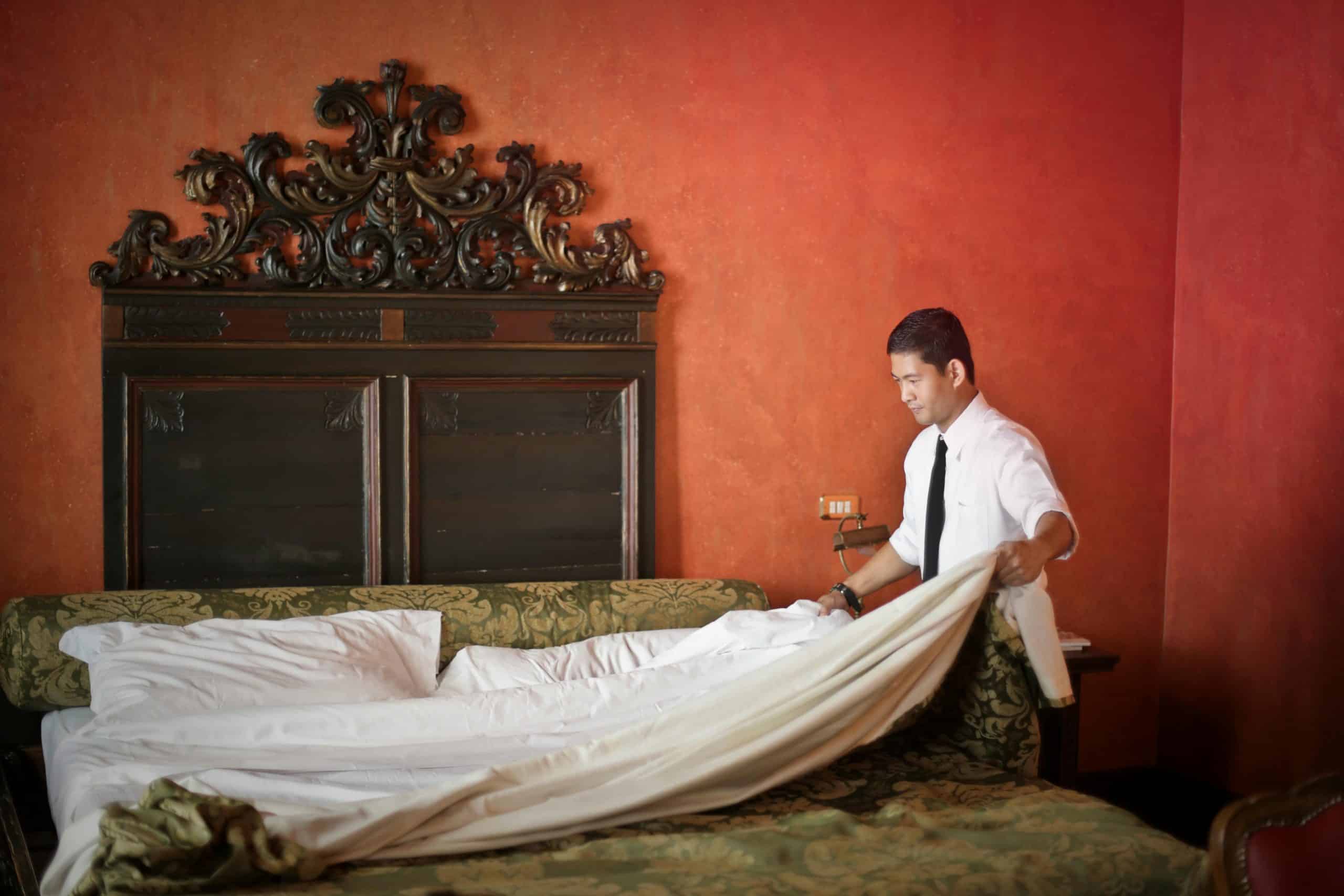The seamless fusion of classic, time-worn pieces with contemporary, sleek design elements can often result in a stunning, thought-provoking home aesthetic. However, the integration of antique artefacts within a modern context is an art in itself. It requires a keen eye for design, a fair bit of experimentation, and an understanding of how to balance the old with the new.
This article will guide you through the steps and considerations necessary to make this style fusion a reality in your space. We’ll explore the power of contrast, the importance of balance, how to make antiques work as focal points, and finally, the role of accessories in bringing it all together.
Lire également : What Are the Best Plants for Purifying Air in a Home?
The Power of Contrast
The first step to integrating antiques into a modern setting is to embrace contrast. Antiques can add a layer of complexity and depth to a space that modern pieces often can’t. They bring with them a sense of history and narrative that can make a room feel richer and more interesting.
When considering which antiques to incorporate, think about how they will contrast with your modern pieces. Do they offer a different texture, a pop of color, or a unique shape? Perhaps there’s an antique table that contrasts wonderfully with your sleek, minimalist sofa, or an ornate mirror that stands out against a clean, white wall.
Lire également : How to Choose Ergonomic Furniture for a Small Home Office?
Remember, contrast isn’t just about visual differences. It’s about creating a dialogue between the old and the new, the past and the present. By finding ways to highlight these contrasts, you are not only making a design statement but also creating a space that tells a story.
Achieving Balance
The second factor to consider is balance. Balance in interior design is about creating a sense of stability and harmony. It’s about making sure that no single piece or style dominates the space.
When integrating antiques into a modern setting, this balance can be achieved in several ways. You might decide to distribute your antique pieces evenly throughout the space, so they are not concentrated in one area. Alternatively, you might choose to balance bold, statement-making antiques with more subdued, modern pieces.
Consider the size, color, and style of your antiques. A large, ornate antique may need to be balanced with several simpler, modern pieces. On the other hand, a smaller, understated antique could be paired with a single, bold modern piece.
Using Antiques as Focal Points
Antiques can be great focal points in a room. A focal point is a piece that immediately draws the eye and sets the tone for the rest of the room. By making an antique piece your focal point, you can showcase its beauty and character, and make it the star of the show.
When choosing your focal point, consider its location and visibility. It should be placed in a prominent position, where it can be easily seen and appreciated. You might choose to place it against a contrasting background, to really make it stand out.
Once you’ve chosen your focal point, you can arrange the rest of your furniture and decor around it. This will help to create a sense of cohesion and unity, and ensure that your antique does not feel out of place or disconnected from the rest of the room.
Accessorizing With Antiques
Finally, don’t forget about the power of accessories. Smaller antique items, like vases, lamps, and bookends, can be just as effective as larger pieces in adding character and charm to a modern space. They can also be easier to incorporate, as they don’t require as much space or commitment.
Consider the colors, textures, and styles of your accessories. They should complement the rest of your decor, but also stand out enough to be noticed. You might choose to group similar items together, or mix and match for a more eclectic look.
Accessories are also a great way to introduce antiques into your space gradually. You might start with a few small items, and then add more as you become more comfortable with the style.
In the end, integrating antiques into a modern setting is about more than just aesthetics. It’s about creating a space that reflects your unique personality and style. It’s about finding beauty in the old, the new, and the unexpected. And most importantly, it’s about creating a home that you love to live in.
Antique Maintenance and Care
When integrating antique pieces into a contemporary setting, it’s essential to consider the care and maintenance these items typically require. Many antique items, due to their age and the materials used in their construction, need specific care to maintain their beauty and integrity. This section will provide tips on how to ensure your antiques continue to shine in your modern setting.
Antique furniture usually requires gentle cleaning methods. Avoid using harsh chemicals or abrasive cleaners as they could damage the finish or color of the piece. Instead, opt for mild soap and water for regular cleaning. It’s also wise to consider using beeswax polish to protect the item and enhance its natural patina.
Regarding antique textiles or rugs, these should be cleaned professionally to prevent damage. Remember to keep them away from direct sunlight to prevent fading. If your antique item is a painting or print, it’s best to place it away from humid areas and direct sunlight to protect the colors and prevent warping.
Caring for antiques also involves proper handling. Always lift furniture from its strongest point and avoid dragging it across the floor. For delicate items, it’s best to use both hands to prevent accidental drops.
As a rule of thumb, remember that antiques are often delicate and require a gentle touch. Always investigate the best care methods for each specific item. This way, your antiques will continue to contribute their charm and character to your modern setting for many years to come.
The Joy of Hunting for Antiques
Part of the thrill of integrating antiques into a modern setting is the hunt for those perfect pieces. Hunting for antiques can be an exciting adventure, as you comb through antique shops, flea markets, estate sales, and online marketplaces. It’s like a treasure hunt where you never know what gem you might stumble upon.
As you hunt for antiques, keep your space and current furnishings in mind. Having a good sense of your existing decor will help you choose pieces that will integrate well into your modern setting. Don’t forget to take measurements of your space, so you don’t end up with a piece that’s too big or too small.
Remember, it’s not always about finding the most expensive or rare antique. It’s about finding pieces that speak to you on some level, that resonate with your personal aesthetics, and that you can envision living with in your space. The value of an antique lies not just in its age or rarity, but in the joy it brings to its owner.
Conclusion
Incorporating antiques into a modern setting involves a delicate balance of contrast, harmony, and thoughtful placement. It’s a wonderful way to add depth, character, and a touch of the unexpected to your home. While it may require a bit of effort and a keen eye for design, the results can be truly stunning.
Whether it’s a grand piece of furniture that becomes the room’s focal point, or a small accessory that adds a dash of charm, antiques have the power to transform a space. They bring a sense of history and narrative, creating a home that tells a story.
Remember, the hunt for the perfect antique piece can be as rewarding as the final display. And with proper care, these treasures from the past can continue to shine in your modern setting. So, embrace the challenge, enjoy the process, and most importantly, create a space you love.






